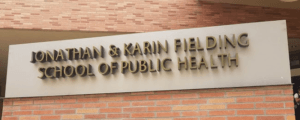Three years ago, on a warm summer night, I found myself in a classroom — not on campus, but in the office of a local nonprofit. I was joined not by classmates, but by people who lived in the surrounding neighborhoods. My teacher was not a university professor, but rather these local residents. And I was there to learn not about clinical medicine, but about their experiences living in a rapidly gentrifying city, of dealing with the health insurance system that we have, and about facing the uncertainty of climate change.
This lesson took place after my first year of medical school. I attended this as part of a workshop series hosted for local residents, utterly unrelated to clinical medicine. Yet memories from that experience, things that I learned, stick with me three years later.
In medicine, we often find ourselves with tunnel vision. Our first impressions of our patients are of their chief complaints. We’re taught to come up with immediate differential diagnoses with just basic demographic information and vital signs. We make assumptions based on how our patients dress, their age, what health insurance (if any) they have, how they talk. And what little social history we get is formulaic — if they smoke, drink, use drugs.
It’s easy to see our patients as constellations of complaints and symptoms packaged in human bodies. It’s easy to focus on our patients’ chief complaints and on alleviating their immediate needs. It’s easy, in the time and logistical constraints of modern medicine, to see success chiefly as getting our patients discharged as soon as possible. But something is not working. The system isn’t working because patients come back over and over again for the same problems and co-morbidities, such as diabetes and obesity, are the most prevalent in recorded history.
Our patients are more than just their symptoms. Just as we won’t ignore abnormal vital signs, we cannot ignore the environmental and social factors that impact the health of our patients. And despite our best efforts, we won’t be able to combat large scale increases in cardiovascular, mental health, and lung function risk factors by concentrating on hospital or clinic medicine alone. The clinical presentation of our patients directly results from the environment and society that they live. If we care about our patients’ health and well-being, then we need to address the political, social, economic, and environmental influences on their health head-on.
I still remember those moments in that classroom three years ago. It reminds me not only of the challenges that our patients face but also of the responsibilities that we, as doctors, have and the idealism that first attracted me to medicine. In our practices, we can see the social, economic, and environmental issues affecting our patients before others can. We’re entrusted with some of our patients’ closest secrets, and we’re in a unique position to bring attention to inequities in healthcare and beyond. We can and must lead, not just in the clinic or the hospital, but in local neighborhoods, in the lab, in city hall, in Congress — because our patients need us.
- White Coats for Change - May 5, 2020




